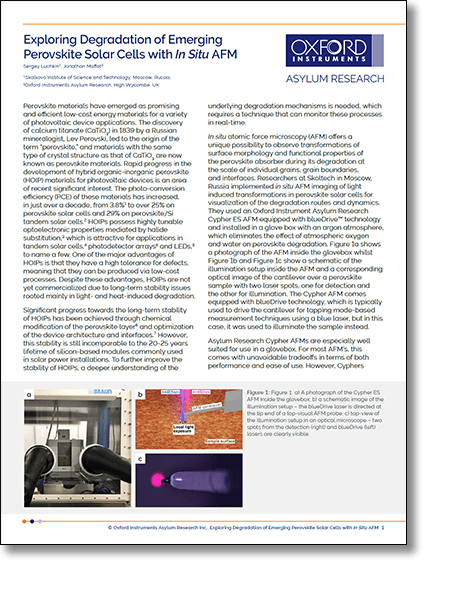AFM Systems
AFM Accessories
Learning
Contact Us
Perovskite materials have emerged as promising alternatives to conventional silicon-based photovoltaic materials. Rapid progress has been made at improving their photoconversion efficiency and developing solution-based processing techniques to enable their low-cost production. Despite these advantages, perovskites are not yet commercialized due to poor long-term stability caused by light- and heat-induced degradation.
This new application note describes work by researchers at Skolkovo Institute of Science and Technology and their collaborators in which they investigated light-induced damage of a perovskite photovoltaic material. They used their Asylum Research Cypher ES AFM equipped with blueDrive photothermal excitation and placed the entire system in a glovebox to eliminate sample damage due to water and oxygen in the ambient air. Normally the blueDrive light source is focused on the base of the cantilever for tapping mode excitation, but here they intentionally aligned it just off the end of the cantilever near the tip. This provided a convenient means to apply local, intense illumination to the material and then characterize the resulting sample damage using tapping mode topography and Kelvin Probe Force Microscopy (KPFM). The work demonstrates how the unique capabilities of the Cypher ES enable novel research that expands the bounds of our scientific knowledge.
Download the application note to read about:
